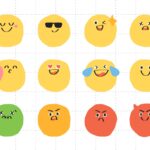Parenthood can be both incredibly rewarding and undeniably challenging. If you are a parent or caregiver, you know that one of the most difficult challenges comes when you have concerns about your child’s development.
Maybe your child isn’t hitting their milestones as expected, or you have concerns about their behavior or social skills. Maybe you have a school-aged child who is struggling, and you have always suspected that there is something more going on. Could it be Autism?
In this article, we’ll explore the signs and symptoms of Autism and share the latest diagnostic criteria. While this information aims to be informative and supportive, it’s important to engage in a conversation with your child’s doctor about any concerns you may have. They can offer personalized recommendations tailored to your child’s specific needs.
What is Autism Spectrum Disorder (ASD)?
Autism Spectrum Disorder (ASD) is a neurodevelopmental condition that affects a person’s social communication and behavior. It encompasses a broad range of strengths and challenges, creating a spectrum where each person’s experience and presentation is unique.
Autism is a relatively common diagnosis, affecting 1 in 36 children in the US. It can be accurately diagnosed around the age of 2, though the average age of diagnosis in the U.S. is 5. Autism affects how individuals communicate, form relationships, process sensory information, and engage with their surroundings.
Some individuals with ASD may have exceptional abilities in specific areas, often displaying remarkable attention to detail, strong memory, or intense focus on their interests. They might also experience significant challenges in communication and social interaction, or display repetitive behaviors.
The spectrum includes conditions previously diagnosed separately, such as Autistic Disorder, Asperger’s Syndrome, and Pervasive Developmental Disorder-Not Otherwise Specified (PDD-NOS), all now consolidated under the broader diagnosis of Autism Spectrum Disorder.
Official Criteria for an Autism Diagnosis
The American Psychiatric Association’s Diagnostic and Statistical Manual, Fifth Edition (DSM-5) provides standardized criteria for the diagnosis of Autism. These criteria include persistent deficits in three types of social communication as well as at least two types of restricted repetitive behaviors.
Types of Social Communication
- Social-Emotional Reciprocity – Children with Autism display difficulties in back-and-forth conversation. They may have limited sharing of interests or emotions, and fail to initiate social interactions.
- Nonverbal Communication – In children with Autism, difficulties in nonverbal communication can manifest in various ways, such as limited eye contact, challenges in understanding or using gestures, a lack of facial expressions, and difficulties in interpreting social cues.
- Developing, Maintaining, and Understanding Relationships – Children with Autism may struggle to adapt their behavior to different social situations, have trouble engaging in imaginative play or forming friendships, or show a lack of interest in their peers.
Types of Restricted, Repetitive Behaviors
Per the DSM-5, an Autism diagnosis requires at least two of these types of behaviors:
- Stereotyped or repetitive motor movements, use of objects, or speech. These motor movements can include things like hand flapping, twirling, or rocking. The repetitive use of objects may look like lining up toys, flipping objects, or using objects in unusual ways. Repetitive speech patterns include echolalia, which is repeating words or phrases they’ve heard, and scripting, where they repeat lines from movies or books without using them in a meaningful way in conversation.
- Insistence on sameness, inflexible adherence to routines, or ritualized patterns of verbal or nonverbal behavior (e.g., extreme distress at small changes, difficulties with transitions, rigid thinking patterns, greeting rituals, need to take the same route or eat the same food every day).
- Highly restricted, fixated interests that are abnormal in intensity or focus.
- Over or under-reactive to sensory input – for example, temperature, light or sound sensitivity, excessive touching or smelling of objects, fascination with lights or movement.
Signs and Symptoms of Autism in Children
Clinicians rely on the descriptions mentioned above as diagnostic criteria. However, for parents navigating daily life with a child who might have Autism, here are some key signs to watch for:
Early Signs to Watch for in Infants and Toddlers
- Not responding to their name, avoiding eye contact, or not smiling back when smiled at
- Difficulty in using gestures like pointing or waving, and reduced or delayed babbling
- Not speaking words by 16 months, not combining words by 24 months, or loss of previously acquired speech
- Engaging in repetitive movements (e.g., hand-flapping), being overly attached to routines, or showing intense interest in specific objects or topics
- Being overly sensitive or under-reactive to sensory stimuli, such as being bothered by certain textures
- Lack of interest or understanding of how to play with other children
Signs of Autism in School-Aged Children
- Difficulty in making or keeping friends
- Engaging in repetitive movements or actions, or displaying intense interest in specific topics or objects, often to the exclusion of other interests
- Challenges in verbal and nonverbal communication, such as difficulty maintaining conversations, understanding jokes or sarcasm, using gestures appropriately, or having a monotone or unusual speech pattern
- Heightened sensitivity or under-reactivity to sensory stimuli, which might manifest as an aversion to certain textures, noises, or lights
- Difficulty adapting to changes in routines or environments, a strong preference for sameness, and distress when routines are disrupted
Diagnosing Autism
Autism diagnosis requires diagnostic testing. This comprehensive assessment aims to evaluate various aspects of a child’s development, including their social communication, behavior, language skills, and cognitive abilities.
The process of diagnosing Autism typically begins with screenings and assessments designed to observe and analyze a child’s behavior, communication patterns, and social interactions. These initial screenings can help identify potential signs or indicators that warrant further evaluation.
The importance of seeking a professional evaluation cannot be overstated. While online resources and checklists can provide insights, a formal evaluation by a healthcare professional, such as a developmental pediatrician, child psychologist, or neurologist, is crucial for an accurate diagnosis. They employ standardized tests, observations, and parent/caregiver interviews to comprehensively assess a child’s development and behavior.
Benefits of Early Diagnosis and Intervention
Obtaining an early diagnosis is key to initiating timely intervention and support for children on the Autism Spectrum. Early intervention programs tailored to a child’s specific needs can significantly improve their developmental trajectory, social skills, communication abilities, and overall quality of life. Research consistently shows that early intervention can make a profound difference in a child’s progress, helping them acquire essential skills and adapt to their environment more effectively.
Seeking Support
Applied Behavior Analysis (ABA) Therapy is considered the gold standard for children with Autism. Insurance requires an Autism diagnosis before beginning ABA Therapy. Occupational Therapy (OT) can help your child with the sensory challenges associated with Autism, and Speech Therapy can help with deficits in speech and social communication.
Westside offers diagnostic testing for Autism, as well as comprehensive services including ABA Therapy and ABA Therapy Groups. Please click the link below or call us at (815) 469-1500 and our team will walk you through the process.







